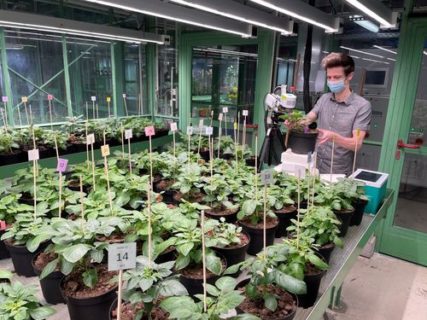Too much can be problematic
Under natural conditions, photosynthesis has to be adapted to fluctuating light intensities. Leaves exposed to strong light shed excess light energy in the form of heat at Photosystem II (PSII) through a process called non-photochemical quenching (NPQ). During the rapid transition from light to shade, plants lose light energy through a relatively slow relaxation of photoprotection. The combined overexpression of violaxanthine epoxidase (VDE), photosystem II subunit S (PsbS), and zeaxanthine epoxidase (ZEP) in tobacco accelerates photoprotection relaxation and increases photosynthetic productivity.
To study the effect of accelerated relaxation on potato yield, genetically engineered potato plants expressing the above genes were created. The results of the studies were recently published in the renowned Journal of Integrated Plant Physiology under the title „High non-photochemical quenching of VPZ transgenic potato plants limits CO2 assimilation under high light conditions and reduces tuber yield under fluctuating light“.

